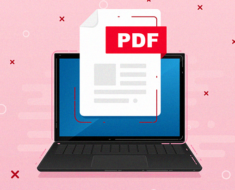
Web applications have transformed the way businesses interact with customers, enabling seamless transactions and global reach. Among the key functionalities of these apps is their ability to securely manage payments. This article delves into the intricate process of how web apps connect with payment processors, ensuring smooth and secure transactions to enhance user satisfaction and business efficiency.
Integration Methods
Integration methods for web apps and payment processors vary widely, with APIs emerging as a popular and versatile choice. APIs, or Application Programming Interfaces, act as intermediaries, facilitating communication between the web app and the payment gateway. They play a crucial role in data transmission, ensuring that payment information is securely exchanged between the two systems. APIs also enable the web app to efficiently process payments, enhancing the overall user experience. This integration method allows for seamless and secure transactions, which is essential for building trust with customers and ensuring the success of online businesses.
Security Measures
Security is a paramount consideration when connecting web apps with payment processors. SSL certificates are instrumental in this regard, as they encrypt data transmitted between the web app and the payment processor. This encryption is vital for protecting sensitive information, such as credit card details, from unauthorized access and potential data breaches. Implementing robust security measures not only safeguards user data but also builds trust with customers, enhancing their confidence in the web app’s security. Ensuring the protection of payment information is crucial for maintaining compliance with data protection regulations and safeguarding the reputation of the business.
Protocol Translation
Protocol translation is a crucial aspect of connecting web apps with payment processors, especially when utilizing an API gateway. API gateways act as intermediaries between the web app and the payment processor, translating data from one format to another to ensure compatibility. This process is essential for seamless communication and transaction processing. By leveraging an API gateway, web apps can efficiently connect with payment processors, enhancing their functionality and user experience.
Payment Processing
Once the web app sends payment information to the payment processor, the processor initiates a series of checks and processes to verify the transaction details. It communicates with the issuing bank to authorize the payment, ensuring that there are sufficient funds in the customer’s account and that the transaction is legitimate. This authorization process involves various security checks to mitigate the risk of fraud. Once authorized, the payment processor sends a confirmation back to the web app, completing the transaction. This entire process occurs in a matter of seconds, allowing for quick and efficient payment processing, which is crucial for providing a seamless user experience.
Future Trends in Web App Payment Integration
Looking ahead, future trends in web app payment integration include the adoption of blockchain technology for secure and transparent transactions. Additionally, machine learning algorithms will be increasingly utilized for fraud detection and risk management. Furthermore, the rise of contactless payments and digital wallets will influence how web apps interact with payment processors, emphasizing the need for seamless and convenient payment options. These trends will shape the future of web app payment integration, enhancing security, efficiency, and user experience.














